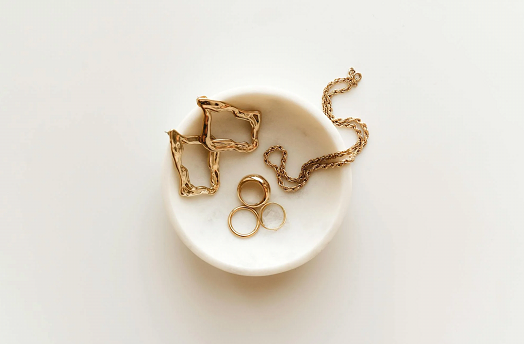In today’s fast-paced world, taking a moment to reflect on your day and assess your emotions is more important than ever. A “How Was Your Day Feelings Check Outclipart“ is a simple yet effective tool to help you pause, reflect, and understand your emotions. By using expressive clipart images to represent different feelings, you can quickly gauge your emotional state and identify patterns in your mood over time. This practice not only helps improve self-awareness but also supports mental well-being.
What is a Feelings Check?
A feelings check is a brief, intentional moment when you pause to assess and acknowledge your current emotional state. It’s a practice that encourages mindfulness and self-awareness, allowing you to better understand how you are feeling at a particular moment or at the end of the day.
By regularly checking in with yourself, you can become more attuned to your emotions, recognize any recurring patterns, and take proactive steps to manage your mental health. Feelings checks can be particularly beneficial for those who are experiencing stress, anxiety, or other emotional challenges.
How “How Was Your Day Feelings Check Outclipart” Works
The concept of “how was your day feelings check outclipart” combines the traditional feelings check with the use of clipart images to visually represent different emotions. This approach is especially useful for those who may find it difficult to articulate their feelings with words alone. By selecting a clipart image that best represents how they feel, individuals can quickly and easily express their emotions.
Steps for Using “How Was Your Day Feelings Check Outclipart”:
- Set Aside Time: Choose a specific time each day, such as before bed or after work, to do your feelings check. This helps create a routine and ensures you remember to check in with yourself regularly.
- Choose Your Clipart: Look at a selection of clipart images that represent a range of emotions, from happiness and excitement to sadness and frustration. Choose the image that best matches how you felt during the day.
- Reflect on Your Choice: Take a moment to think about why you chose that particular image. What happened during your day that made you feel this way? Are there any specific events, interactions, or thoughts that contributed to your emotions?
- Record Your Feelings: If you want to keep track of your emotional journey, consider writing down a few notes about your feelings and the events of the day in a journal or digital app. Over time, this can help you identify patterns and understand your emotional triggers.
- Take Action if Needed: If you notice a recurring pattern of negative emotions, consider taking steps to address the underlying causes. This might involve practicing relaxation techniques, seeking support from friends or family, or talking to a mental health professional.
Benefits of Using Clipart for Feelings Checks
Using clipart for feelings checks has several benefits:
- Visual Representation: Clipart images provide a visual representation of emotions, making it easier to identify and express how you feel. This can be especially helpful for those who struggle with verbalizing their emotions.
- Simplifies the Process: The use of images simplifies the feelings check process, making it accessible for people of all ages, including children and those with limited language skills.
- Encourages Engagement: Visuals can make the feelings check more engaging and enjoyable, increasing the likelihood that individuals will stick with the practice over time.
- Facilitates Communication: For parents, teachers, and caregivers, using clipart to check in on feelings can facilitate communication with children or others who might find it hard to articulate their emotions.
Examples of Clipart Emotions for a Feelings Check
To help you get started with your “how was your day feelings check outclipart,” here are some examples of common emotions that can be represented through clipart:
- Happy: A smiling face or a sun with rays might represent feelings of happiness or contentment.
- Sad: A teardrop or a frowning face could symbolize feelings of sadness or disappointment.
- Angry: A red, fiery image or a clenched fist might convey anger or frustration.
- Excited: An image of a jumping character or fireworks could depict feelings of excitement or anticipation.
- Calm: A peaceful scene, like a tranquil beach or a sleeping animal, might represent feelings of calm or relaxation.
- Confused: A question mark or a puzzled face could illustrate feelings of confusion or uncertainty.
Incorporating Feelings Checks into Daily Life
Incorporating a “how was your day feelings check outclipart” into your daily routine can have a positive impact on your emotional well-being. Here are some tips for making this practice a regular part of your life:
- Set Reminders: Use reminders on your phone or calendar to prompt you to do your daily feelings check. Consistency is key to building this habit.
- Create a Visual Chart: Consider creating a visual chart where you place your chosen clipart images each day. Over time, you’ll be able to see patterns in your emotions and gain insights into your mental health.
- Share with Others: If you’re comfortable, share your feelings check with a friend, family member, or therapist. This can help you feel supported and provide an opportunity for deeper reflection and discussion.
- Adapt as Needed: Feel free to adapt your feelings check process to suit your needs. You might choose to focus on different emotions, use different images, or add additional steps, such as deep breathing or mindfulness exercises.
FAQs
What is a “how was your day feelings check outclipart”?
It is a practice of checking in on your emotions at the end of the day using clipart images to represent different feelings.
Why use clipart for a feelings check?
Clipart provides a visual representation of emotions, making it easier to express how you feel, especially for those who struggle with verbalizing their emotions.
How often should I do a feelings check?
It’s recommended to do a feelings check daily to build self-awareness and identify emotional patterns over time.
Can children benefit from feelings checks with clipart?
Yes, using clipart for feelings checks is a great tool for children, helping them learn to identify and express their emotions in a simple and engaging way.
What should I do if I notice a pattern of negative emotions?
If you notice recurring negative emotions, consider taking steps to address the underlying causes, such as practicing relaxation techniques or talking to a mental health professional.
How can I make feelings checks a habit?
Set reminders, create a visual chart, share your feelings with others, and adapt the process to suit your needs to make feelings checks a regular part of your routine.
Conclusion
A “how was your day feelings check outclipart” is a simple yet powerful tool for improving self-awareness and emotional well-being. By using clipart images to represent different emotions, you can quickly and easily check in with yourself and gain insights into your daily emotional landscape. Whether you’re looking to manage stress, enhance mindfulness, or simply understand yourself better, this practice can be a valuable addition to your daily routine.
Give it a try today and discover the benefits of making time for your emotional health and well-being!


